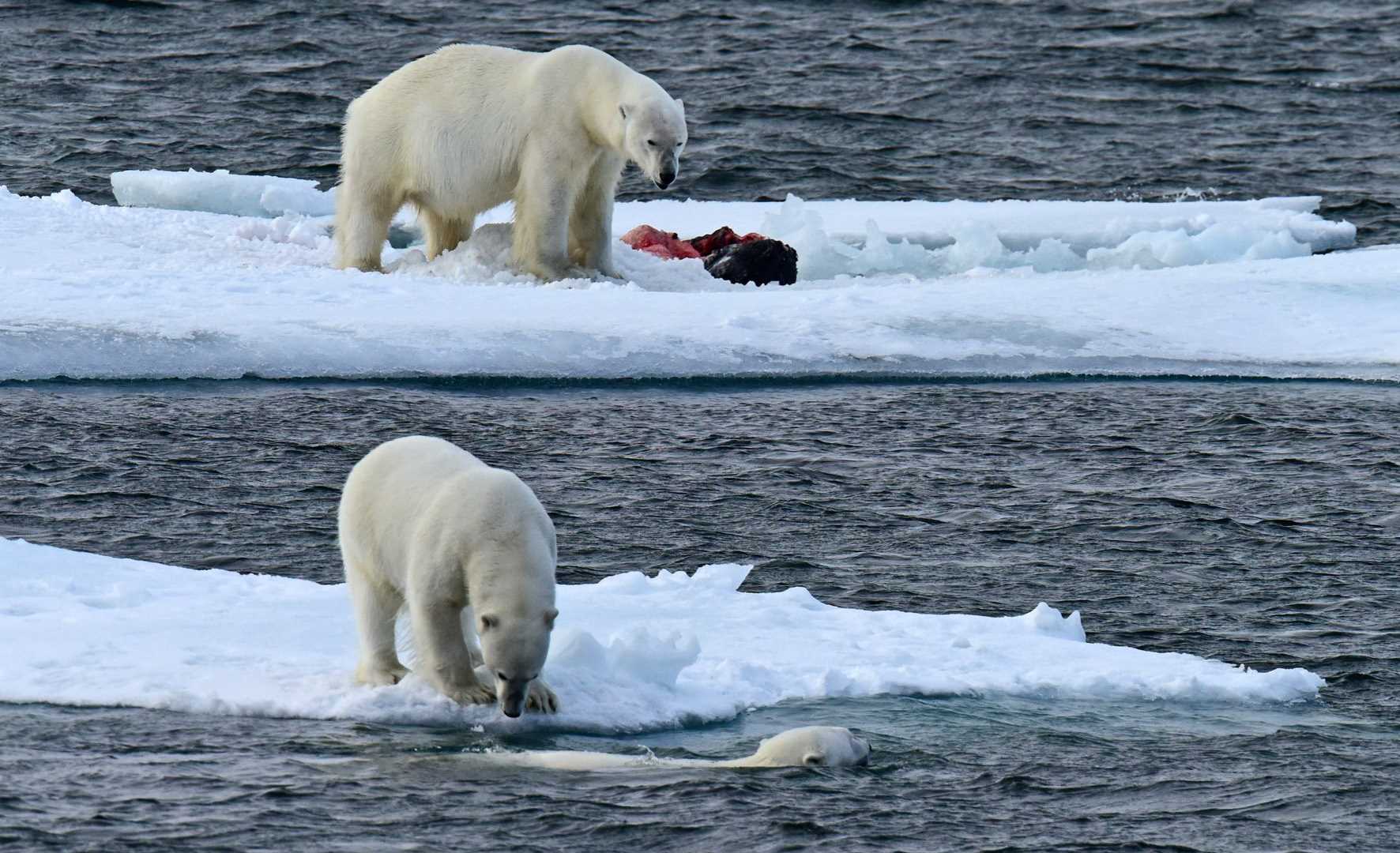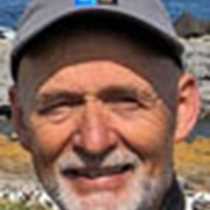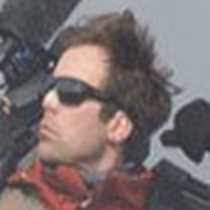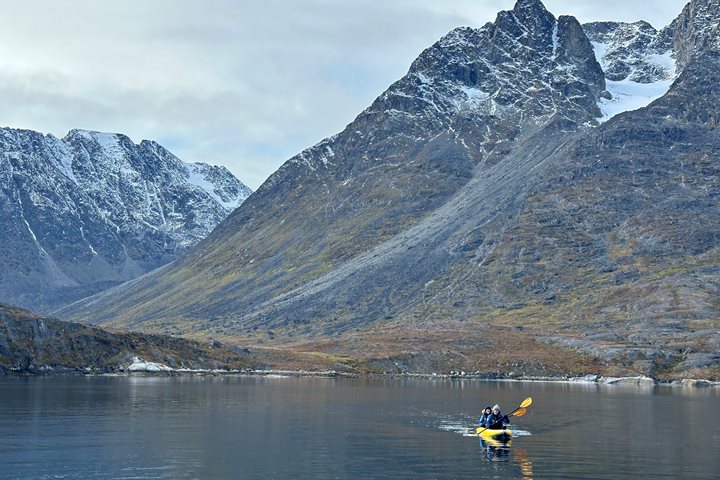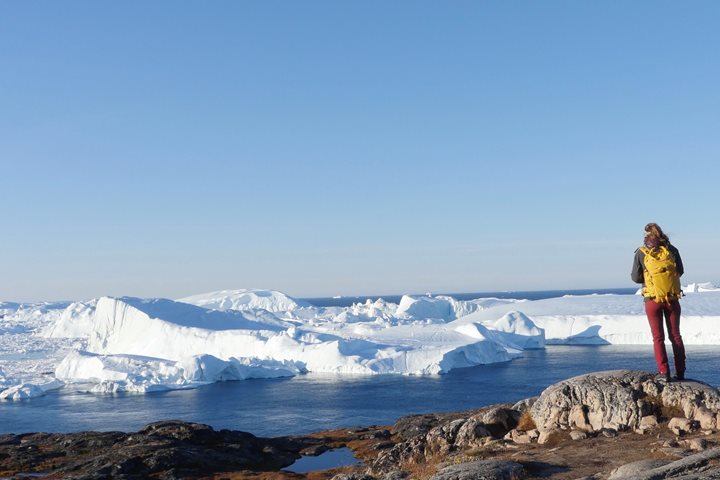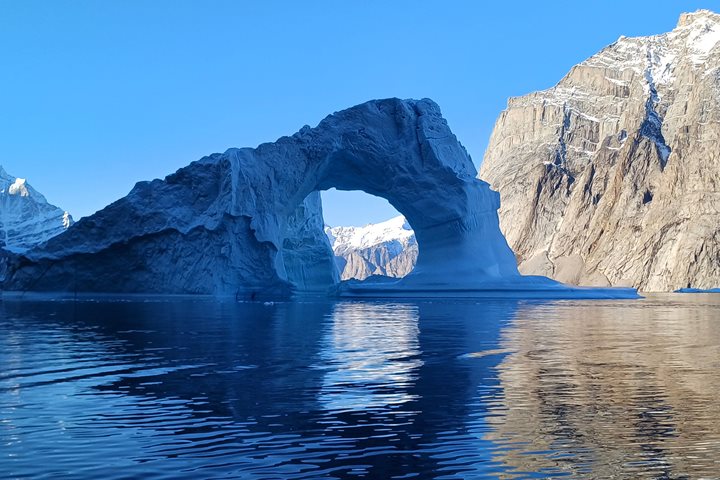In the early morning National Geographic Explorer was surrounded by dense fog. We were cruising westwards just above 75 degrees north, in an area known as the Polar Bear Pass Region. By the end of breakfast time the mist lifted, just enough for a bit of scanning over promising sea ice. We were all in great hope of finding a polar bear. Those having the patience to stay on the bridge were rewarded with a couple of quick glimpses of walrus in the distance. On both occasions, the walrus slipped into the water when still far off. These walruses may have experienced the presence of hunters and learned that their safest place is in the water when a boat of any size appears. This morning the spotting of a few Sabine gulls sitting on a sheet of sea-ice was a definite highlight for any birder onboard. This rare Arctic bird was seen together with a group of black-legged kittiwakes.
During the morning, naturalist Elise Lockton gave a very informative lecture about the polar bear (Ursus maritimus = the sea bear). We learned that this predator at the very top of the Arctic ecosystem can spend its whole life on ice. Only the female needs to go ashore to find a den in the snow where she gives birth to her cubs.
After a good lunch we again encountered fog, so the ship turned 180 degrees back to the pack ice in Queens Channel, just off the northeast coast of Cornwallis Island. As the fog completely lifted, our hopes of finding big marine mammals increased. And what an afternoon that was! After teatime the first polar bear of the day was spotted in the far distance. The ship slowly maneuvered in the right direction, and we gradually got a better look at what seemed to be an adult male. Even at several hundred yards distance the bear slowly moved away, so our search continued. In the late afternoon two more bears were spotted near each other. Then another, and yet another–four bears in total! Two of the bears acted as if they could be young siblings. The third was sound asleep, and the fourth was lying down beside a fresh kill, apparently a large seal. The ship gently approached upwind, and even within a couple of hundred yards none of the bears showed any sign of fear. The two young bears went into the water. And what a water-show they put on! They were greeting and hugging each other, they rolled around, even waved with their paws, they tossed cascades of water around their heads. And the playful creatures continued their water acrobatics for just about an hour. In the meantime the bear by the seal kill–most likely a male–kept a watchful eye on the playful bathers. The entire show produced many ”WOW´s” amongst the rapt audience. The most experienced polar bear watchers aboard confirmed that we had seen something that very few Arctic travelers get to experience: four active and playful bears right in front of us. The ship left the bears as we found them, the ideal end to any wildlife encounter.
After dinner the photo team offered useful feedback to those who had handed in photos for photo critique. Any professional National Geographic photographer knows what it is like to be hammered by the editors of the magazine, but our photo team presented the feedback in a gentle and constructive way. What a day of learning, joy and supreme excitement!

